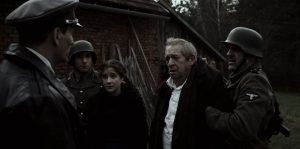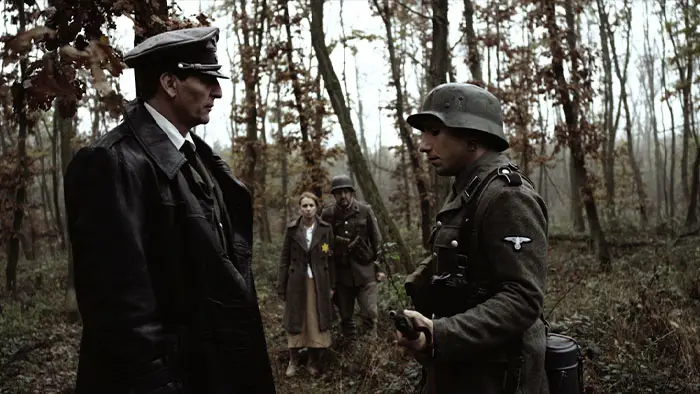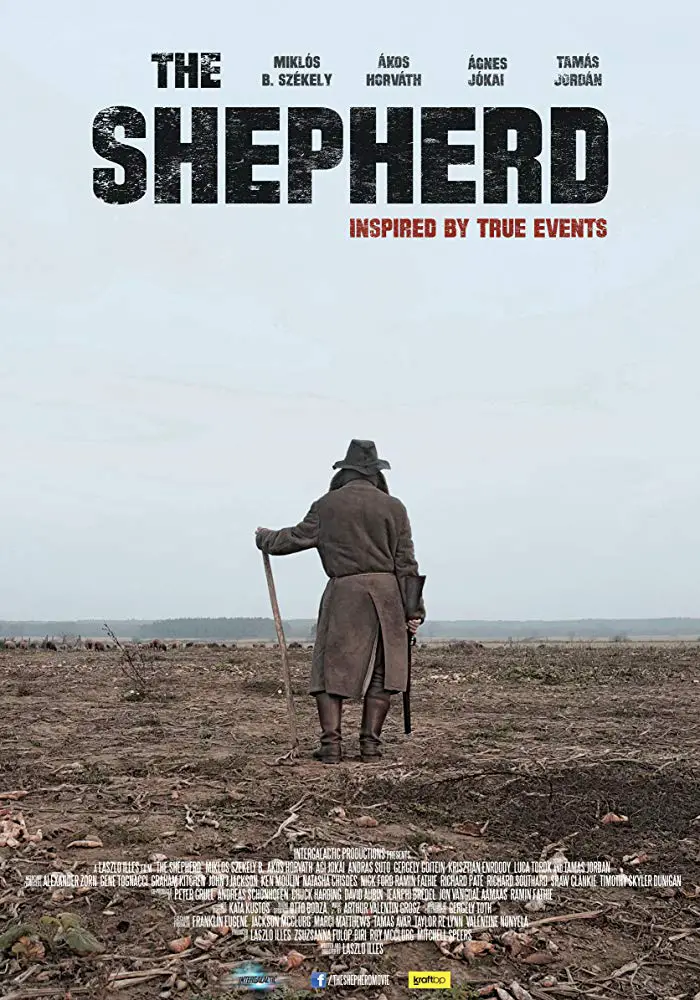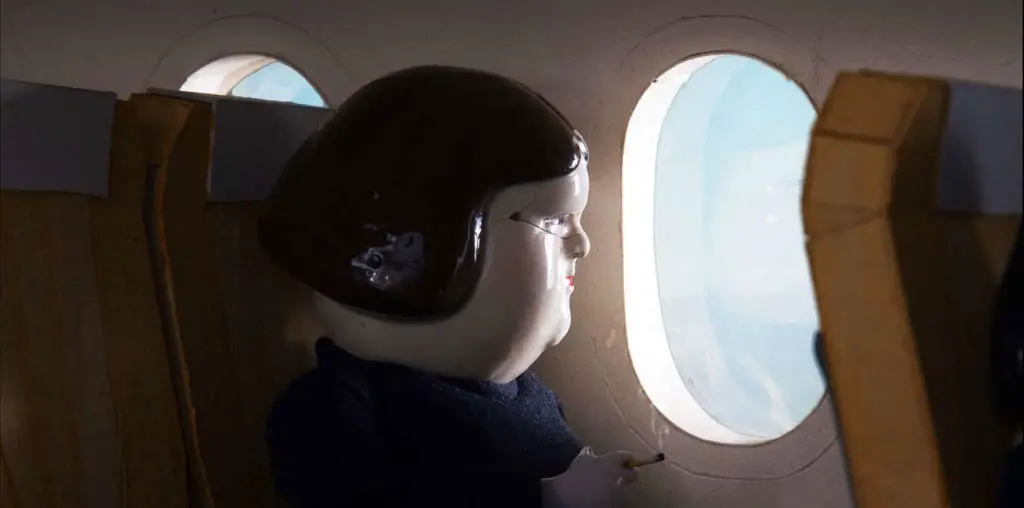
As the guard is being questioned by his superior officers, the prisoners in the rear make a run for it. But not fast enough, the Nazi officers begin shooting the fleeing prisoners one-by-one, the brother and sister take cover as the soldiers pass them by. But the relentless Nazis ultimately catch up to the pair and administers their gruesome acts of torture and retribution. When the officers leave, it is here we catch up with the story where the shepherd friends the nude sister in his field.
The Shepherd takes the Nazi atrocities from the point of view of the numerous civilians, who knew exactly what was happening in the world at that time and choose to do the right thing…even at a high price. This is that story as the shepherd chose to actively hide the hunted Jews on his farm and actively lie to protect them. Doing what was right came at a cost and The Shepherd does not sugar coat anything.

“…leans into these harsh realities of the time as opposed to providing heroic optimism.”
Looking at The Shepherd from a filmmaking standpoint, you can tell the budget was not that high. Illés effectively uses props and costuming to convey authenticity in his historic period piece. He also found the right location with an old side country road and farm.
The cinematography is both the hero and the villain in this film. Illés uses handheld cameras to evoke motion and tension in his storytelling. The only real negative of the film is its pacing. The movie is slow and moves slow. Partly, because most of the film is a series of long single shots. Take the start of the film as the old shepherd is outside doing chores and comes into the house to cook his meal, where he sits staring an a image of his deceased daughter eating at the table. While this shot is a long one, Illés uses camera movements to reveal the daughter’s image quite effectively. I love the use of these single shots throughout but they do slow the pace down and it often feels slow too.
The events of World War II in Europe were hard, brutal, and intimidating to those who did what was right and moral. The Shepherd leans into these harsh realities of the time as opposed to providing heroic optimism. most of the film is a series of long single shots. The film takes a fly-on-the-wall approach by standing back and filming the action as it happens versus creating dramatic or theatrical moments. The actors are good in their roles playing their characters as if they were the people in that situation. No grand speeches, as the film just wants to place us in the middle of the story. The final film never reaches Schindler’s List levels of brutality, but it’s brutal none the less.

"…most of the film is a series of long single shots."

